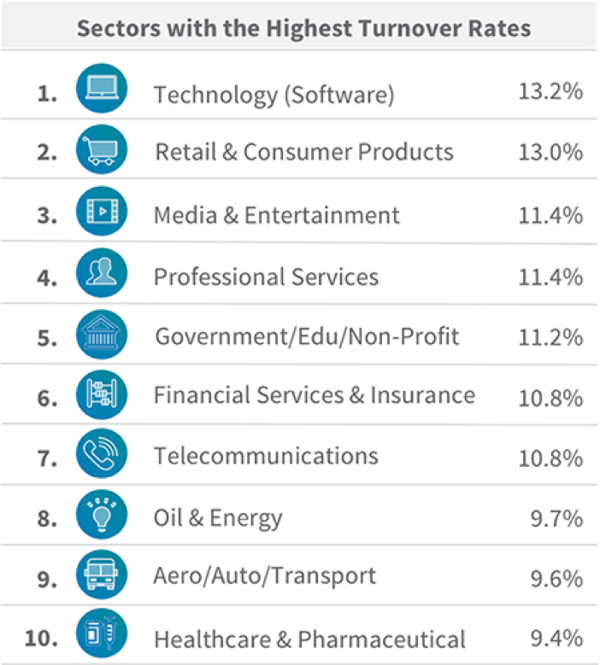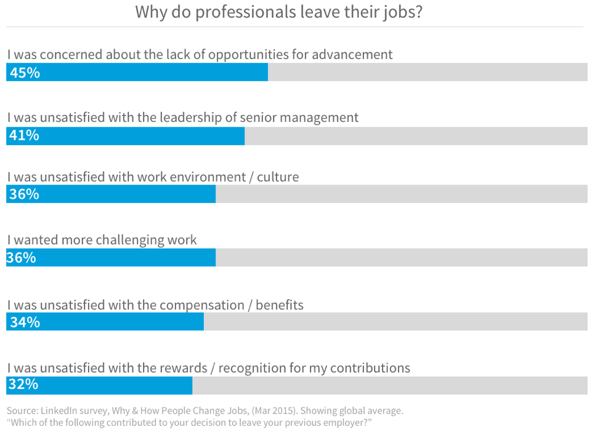
LinkedIn’s data based on 500 million professionals reports an average 10.7% turnover rate worldwide. Company leaders are vying for top talent and looking for strategies to increase employee retention. Here, we’ll explore the industries with the highest turnover rates, and outline some effective strategies for retaining key employees.

Of course, some turnover is good, especially when not-so-valuable employees self-select and leave the company voluntarily. When you are not able to retain the employees you want to retain, that begins to get expensive, affects company performance and can impact morale.
LinkedIn surveyed 10,000 employees to find out why they left their former positions:

These reasons are not surprising and appear on almost every list of reasons why people leave their jobs. If company leaders know why employees are disengaged and looking for other employment, why don’t they address these concerns?
Many do not make the connection between an investment in human capital and company retention rates and performance. Rewarding & recognizing employees is a primary way in which to improve performance, revenue and retention, yet many companies still do not have a formal employee recognition program in place. An experienced professional can help design an effective program that will provide a measurable return on investment.
Improving Employee Retention
- Outline opportunities for personal and professional growth. Preferably in the interview! Then follow through, and make sure that management is communicating with employees on a regular basis.
- Ask for input. Employees doing the job are the most likely to provide information as to how to improve performance, suggest tools that would make the job easier or more efficient and other valuable feedback.
- Reward & recognize. Who doesn’t like feeling that their contributions are valued? Partner with an experienced professional to make sure you avoid the pitfalls and unintended consequences of poorly designed programs.
- Provide feedback. Don’t make employees guess how they’re doing. If you have a formal recognition program, regular feedback will be part of it. Until you DO have such a program, make sure to provide encouragement, corrections when necessary and other constructive feedback that will keep employees on the right track.
- Improve the corporate culture. Every organization has a culture, even if they haven’t built it intentionally. Make sure yours is designed on purpose. Incorporating your mission and values into every policy decision and procedure is a good start. Designing an employee recognition program that rewards employees for exhibiting those values is another. Of course, it’s critical that company leaders’ behavior is consistent with those values as well.
Examining the reasons why your employees leave and working to correct those issues is a basic first step. Strategically reward & recognize your employees based on clearly communicated company goals according to company values and you’ll see your employee retention rates rise!
How engaged are your employees?




